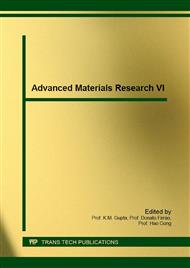p.68
p.73
p.81
p.86
p.93
p.98
p.103
p.108
p.114
Prediction of Long-Term Creep Behavior of High Performance Composite Material for Spacecraft
Abstract:
Even though carbon/epoxy composite materials have been widely used in aircraft for many years, different requirements are often required for composite materials in spacecraft application due to the space environment. Some of the considerations include modulus and thermal properties for spacecraft while as strength is important for aircraft. For heat pipe panels, space radiator, antennas or optical benches, thermal stability is required for the life of the satellite. In this study, long term creep behavior of high performance composite material is investigated with time-temperature shift factor. The fiber is pitch-based carbon which shows high thermal conductivity and high modulus. It was possible to predict creep compliance after 5 years from dynamic mechanical analysis data. This information is useful to understand the property change during the intended service life of the spacecraft.
Info:
Periodical:
Pages:
93-97
Citation:
Online since:
April 2016
Authors:
Price:
Сopyright:
© 2016 Trans Tech Publications Ltd. All Rights Reserved
Share:
Citation:


